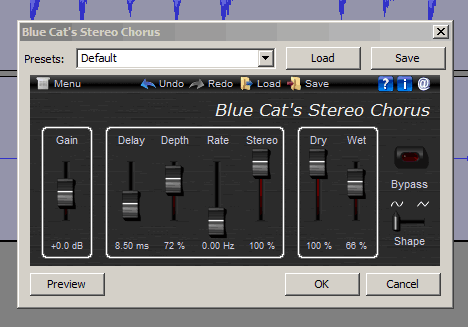You’ve asked a huge question anamarias. “How do I become an expert sound engineer / producer for vocal recording in 10 easy steps”. The short answer is that you can’t, but that’s not useful at all 
Good vocal recording is, at the same time, one of the easiest things and one of the hardest things. It’s one of the easiest things because as long as you can actually hear the singer, a really good singer will sound really good and people will say “Wow that’s fantastic”, then as an afterthought “… shame the recording’s so *****”. On the other hand it’s one of the hardest things because the voice is such a complex instrument and the listener is so familiar with hearing the human voice that they are highly attuned to picking out every subtle nuance. If you play the “average listener” a recording of synthesizer sound they will say “it sounds like a synthesizer”. If you play them a recording of a human voice they may say something like; “sounds like a man, about 30, in an airport, probably a business man of some sort, sound’s a bit like my friend’s husband, has a bit of a cold coming on, probably wearing brown shoes…”
The first part of good vocal recording is the recording itself. That’s half of the job and a very important half. Much of the rest of the job is about correcting what’s wrong with that part of the job.
Has the recording come out too bright, too much bass or not enough middle? That’s when the Equalizer can be used to adjust the relative frequency levels. The Equalizer effect is just a fancy “tone control” for boosting and/or cutting different frequencies. http://manual.audacityteam.org/man/Equalization
Does the recording sound too echoey, too much reverberation, like it’s been recorded in a tunnel? Live with it, you can’t remove echoes or reverb.
Does it sound too dry, not enough “room” sound, not enough reverberation of sound bouncing round the room, like it’s been recorded in a padded cell? Artificial reverb (reverberation) can be added. There’s not just “reverb”, there’s thousands of different types of reverb. Reverb is one of the elements that gives a sense of space and location. A long echoey reverb can make it sound like it’s in a canyon, a warehouse or cathedral. A short bright reverb can make it sound like it’s in a small tiled kitchen. A long smooth reverb can make it sound like it’s in the distance. http://manual.audacityteam.org/man/Effects_for_Beginners_-_1_-_Reverbs
The “standard” reverb for Audacity is “Gverb” (available in the “90 LADSPA plug-in pack”. Few people cite it as their favourite reverb, mostly because the default setting is an extreme cavernous effect, but it can sound much better if the “Room Size” is turned down a lot, the “Reverb Time” is turned down a lot and the “Early Reflection” is turned down a lot. I’d recommend using the “Duplicate and mix together” method as described here: http://wiki.audacityteam.org/wiki/GVerb A nice alternative reverb favoured by many is “Anwida Soft DX Reverb Light” (also listed on that page).
On modern recordings it is common to “squash” the dynamics so that the volume level is more even, particularly by cutting down sudden peaks, so that the overall level can be increased to make the whole thing sound louder. This also has the effect of making the voice sound stronger, richer and “more produced”, but as with all effects it can be easily overdone http://en.wikipedia.org/wiki/Loudness_war The main tools for this effect are “compressors” and “limiters”. http://www.harmonycentral.com/docs/DOC-1202 There is a compressor included with Audacity 1.3.12 http://manual.audacityteam.org/man/Compressor and another favourite is Chris’s dynamic compressor (see the bottom of this page for a link and brief introduction http://wiki.audacityteam.org/wiki/Compressor )
Another common effect for “thickening” vocals is “Automatic Double Tracking” (ADT). This may also be referred to as “slap back echo”, “double tracking” or “delay”. There are subtle variations of this type of effect, but basically it is a copy of the original track that has been dragged to the right a bit so that it plays a fraction of a second after the original. If dragged a long way it will sound like a distinct echo. If dragged only a very tiny bit it will produce a “chorus” or “flanging” type effect and you will notice strange bell-like tones appear (not necessarily in tune). Generally the track is delayed by about 0.04 seconds and the level reduced considerably so that it’s there but only just. More pronounced settings can be effective for certain types of music.
Other tools that you will want are the basic editing tools http://manual.audacityteam.org/man/Edit such as cutting, pasting, fade-in and fade-out
http://manual.audacityteam.org/man/Editing_for_Beginners_-_Silence,_Duplicate_and_Split
http://manual.audacityteam.org/man/Editing_for_Beginners_-_Splitting_and_Submixes
To use effects well you need to be familiar with them. I’d highly recommend that you play with Audacity. Make some silly mixes with over-the-top effects so that you become familiar with what they do, how they work, and most importantly what they sound like.
Always keep backups, particularly direct copies of your original source material.
Audacity 1.3.12 is pretty stable, but to avoid tears, always make fresh backups along the way when you are working on anything long, involved or important.
There are mountains of books and tutorials on this subject. http://www.google.com/search?&q=vocal+recording+techniques
Have fun.

